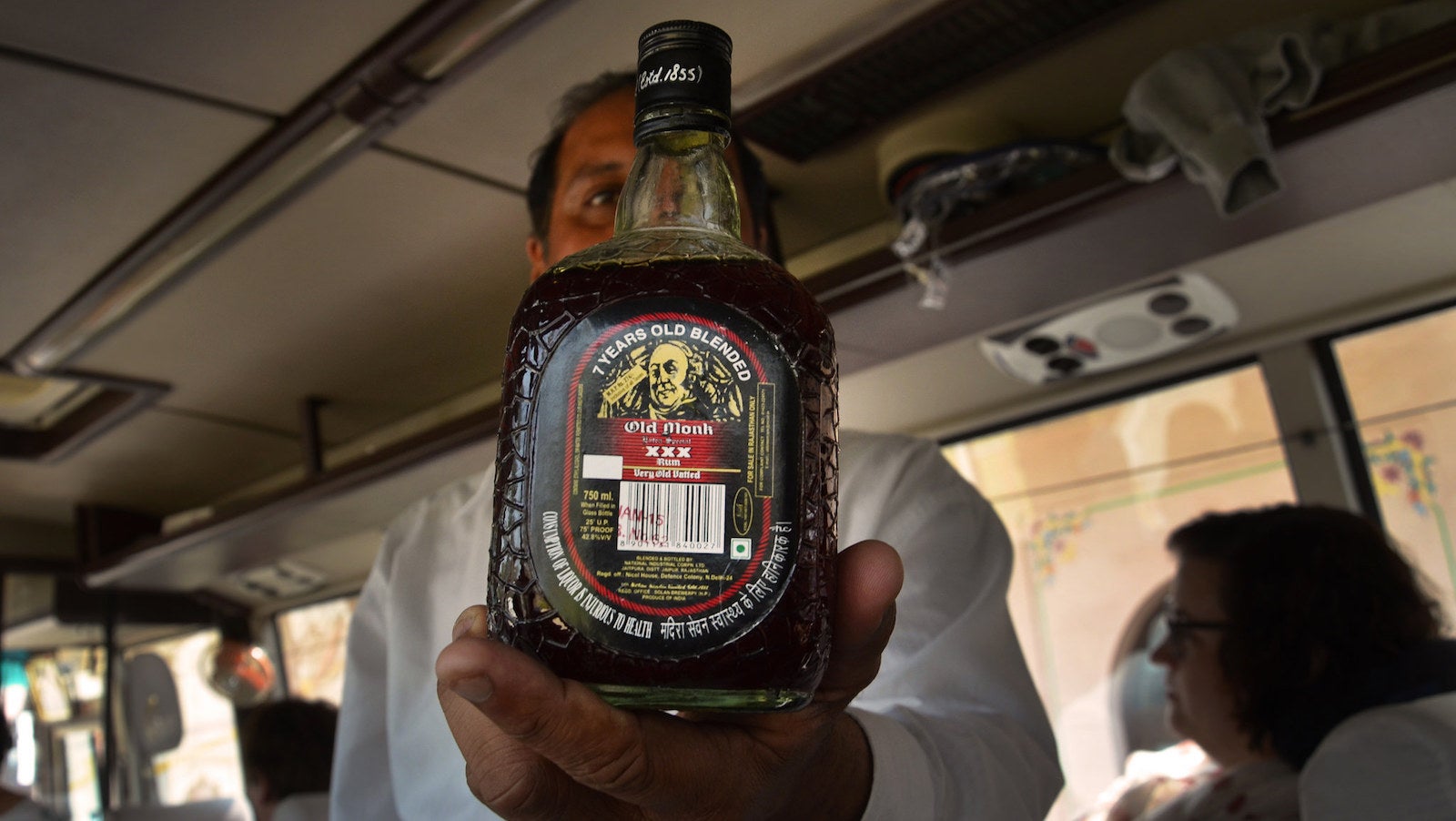Old Monk is dying—and so is India’s love for rum
For years, drinking rum in India simply meant drinking Old Monk.


For years, drinking rum in India simply meant drinking Old Monk.
From officers of the Indian armed forces to the common man on the street, the dark rum—packaged in its iconic short, stout bottle—built up a massive fan base. In fact, Old Monk even has a community page for its ardent lovers on Facebook by the name COMRADE: Council of Old Monk Rum Addicted Drinkers and Eccentrics.
Now, the 60-year-old dark rum brand, owned by Ghaziabad-headquartered Mohan Meakin, is steadily losing its grip on the Indian tippler. Since 2005, Old Monk’s market share has dipped 10%, and now stands at a meagre 5% of the Indian rum market, according to market research firm Euromonitor.
And that’s not only because it is being disowned by its loyal customers for more fancy, foreign brands. It also has to do with the fact that Indians are now drinking less rum than before.
Even as the country’s overall alcohol consumption rises—per capita consumption of spirits is expected to expand at a five-year compounded annual growth rate of 6%, and beer at 8%—India’s rum market, according to Euromonitor, is predicted to shrink by 0.2% annually until 2019.
In 2014, India’s rum market—in terms of volumes—was estimated at 387 million litres, 1.5% lower than the previous year. This, after two preceding years of negative growth.
“Rum is majorly consumed by the mid-income group in urban India and rural India,” said Manjunath Reddy, an analyst with Euromonitor. “The increasing availability of premium brands of whisky like Johnnie Walker, Blender’s Pride, Imperial Blue, and Royal Stag have made rum less attractive.”
As a result, Mohan Meakin, Old Monk’s brewer, is also losing its share of the Indian spirit market.
The company, however, remains defiant.
“Old Monk is still India’s favourite rum and it’s not going anywhere,” SN Maingi, deputy general manager at Mohan Meakin, told the Times of India. “It is our flagship product. Old Monk is the pride of Mohan Meakin. Even if things were to go bad, Old Monk wouldn’t be the product to suffer since it is a priority for our organisation.”
Meanwhile, McDowell’s rum—a 24-year-old brand owned by United Spirits that costs 20% more than Old Monk—has been growing at more than 5% annually. In 2014, McDowell’s controlled close to 40% of the market.
“McDowells rum is the number one rum brand mainly because of premium positioning and also the same brand is present in multiple spirit categories leading to more brand awareness,” Reddy said.
But it’s not all gloom for Old Monk and Mohan Meakin either.
In the financial year that ended March 2015, the company also managed to stage a recovery of sorts. From a loss of Rs19 crore ($2.9 million) in 2013-2014, net profit swung back to Rs3 crore ($472,600) in 2015 fiscal. Much of the improvement was largely due to a near halving of the power and fuel costs of the company and a change in the method of calculating depreciation. Revenues, meanwhile, slipped by 2.9% to Rs529 crore ($83.3 million).
Meanwhile, investors in the company still seem to have faith in Old Monk’s outlook. For instance, Life Insurance Corporation, India’s state owned life insurer and Mohan Meakin’s biggest institutional investor still holds 8.4% stake in the company as of March 2015. Last year, the company even managed to secure a term loan of Rs10 crore from Punjab National Bank, which holds a minor stake in Old Monk’ parent company.
And it’s possible for Old Monk to reclaim lost ground.
“Old Monk as a brand has the highest recognition among consumers across India as the company is one of the oldest in India,” said Reddy.
To capitalise on that, according to Reddy, it needs to aggressively advertise and and push out its product variants nationwide. Indians may be drinking less rum, but Old Monk is special.